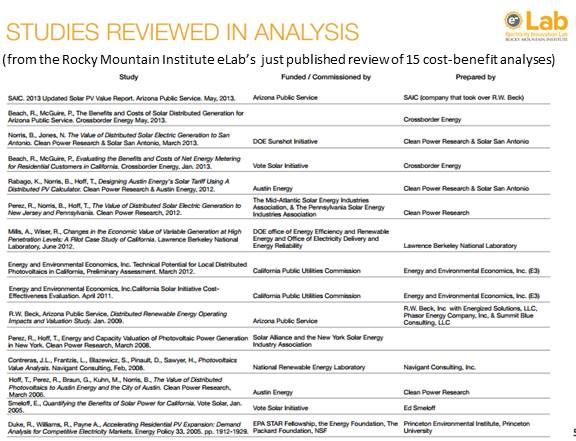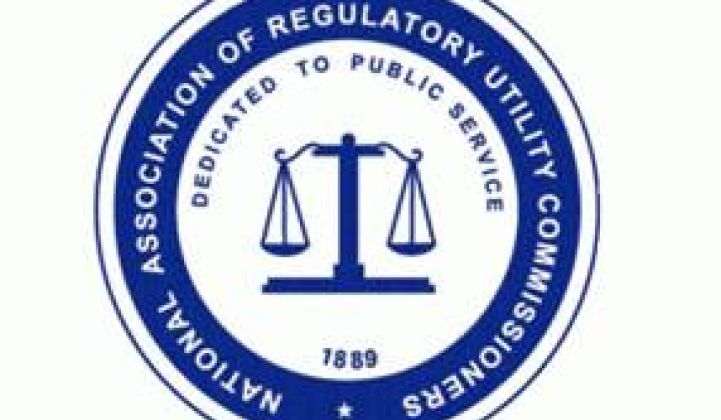The summer meeting of U.S. utility regulators kicked off with a panel discussion about distributed solar, although there was no representative from the solar industry on the panel.
David Owens, Edison Electric Institute (EEI) Executive Vice President, explained that the Critical Consumer Issues Forum (CCIF) is a dialogue to explore a set of principles that could be used by state regulators to understand the potential benefits and risks of distributed generation (DG).
The CCIF dialogue grew out of EEI’s Disruptive Challenges: Financial Implications and Strategic Responses to a Changing Retail Electric Business, a landmark paper which found, Owens said, that “utilities need to be in the business of developing renewable and distributed technologies.”
The paper also proposed a roadmap to do that “in a way where fairness, reliability and safety are protected.”
DG is a transformational technology, Owens said. “The way utilities have been doing business in the past -- our business model, our regulatory model, our customer relationships -- will have to change.”
But the dialogue that opened the National Association of Regulatory Utility Commissioners summer meeting did not include a rooftop solar representative, Owens acknowledged.
EEI encourages dialogue, Owens insisted. Rooftop solar installers “can create a dialogue and invite us to it,” he offered. “I will sponsor any dialogue they want to have,” he added. “I am in favor of a dialogue involving regulators and utilities and distributed generators.”
The discussion, Owens said, would be about the relationship of DG and the grid and about a rate design that would cover fixed costs associated with the grid.
“The grid is the facilitator for what distributed solar developers want to do. To ask for payment for that is not a barrier. It is a realization that if they want to be able to install rooftop solar and other distributed resources,” he said, “they have to acknowledge there is a system to pay for and make a contribution.”

The distribution system, in particular, Owens said, has become much more complex. “We are spending roughly $25 billion per year on our overall distribution system.”
The utility industry is making those investments, he said, because it is anticipating changes. “The utility industry is at the forefront of renewable technologies. We are invested in more renewable technologies than any other industry is,” Owens said, “but the current regulatory model may not accommodate a substantial increase in distributed technologies.”
That model fails to acknowledge that a grid supports distributed technologies and rates have to contribute to supporting it, he explained, “and not have customers who are not [installing] solar pick up the tab. That’s an issue called fairness.”
Utilities do not oppose renewables and “have always been concerned about the environment,” Owens said, and supported renewables before policies and mandates required them to. “I don’t think anybody can conclude that we only made the investments because the laws told us to.”
Early investments were in hydro and geothermal, driven by the federal Public Utility Regulatory Policies Act (PURPA), he added. At that time, wind and solar were immature and not affordable.
“Tax credits and portfolio standards accelerated those technologies,” he said. Now, three things drive the rapid growth of distributed solar. “One is state policies: 29 states have RPSs; 43 states have net energy metering. Second are federal tax incentives. And third, the cost of these technologies is coming down.”

Because of the rapid growth, “We worry about our systems,” Owens said. “The bigger these technologies, the more we depend on them, and the more difficult it is to keep supply and demand in balance. We have to maintain reliability and keep the lights on.”
Owens worked with renewables developers and utilities on PURPA, a part of the National Energy Act of 1977. One “huge difference” between that law and today’s policies, Owens said, “is there was an acknowledgement under PURPA that generators had to pay for the use of the wires. Now, distributed generators have forgotten there is a grid that needs to be paid for, a grid that is supporting distributed technologies.”
Even if DG reduces a utility’s need for power, Owens said, “the electricity grid has to support backup generation or provide the wires through which the generator sells excess power.”
DG advocates can quantify benefits and demonstrate how they offset the costs, Owens said, “but they just can’t pull things out of the air. Show me the costs; show me the benefits.” He saw some value in the Clean Power Research study for Austin Energy on the value of solar, Owens said.
“But it is unfair to say a distributed resource’s power supply is equivalent to a utility’s power supply and the distributed resource should be paid the retail rate,” he said of net metering. “That is unfairness."
The utility’s power is backed up by the entire grid, he explained. ”Distributed generators do not have a grid. They rely on the utility’s grid. Compensating them at the same rate they pay the utility is unfair.”




